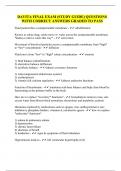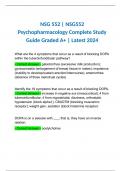College aantekeningen
Class notes Organisation and People An Inter-national approach, ISBN: 9789001850227
- Vak
- Instelling
- Boek
Class notes Organisation and People An Inter-national approach, ISBN: 0227 Class notes / summary organisation and people / organisation and management an international approach for NHL Stenden International Business year 1.
[Meer zien]













